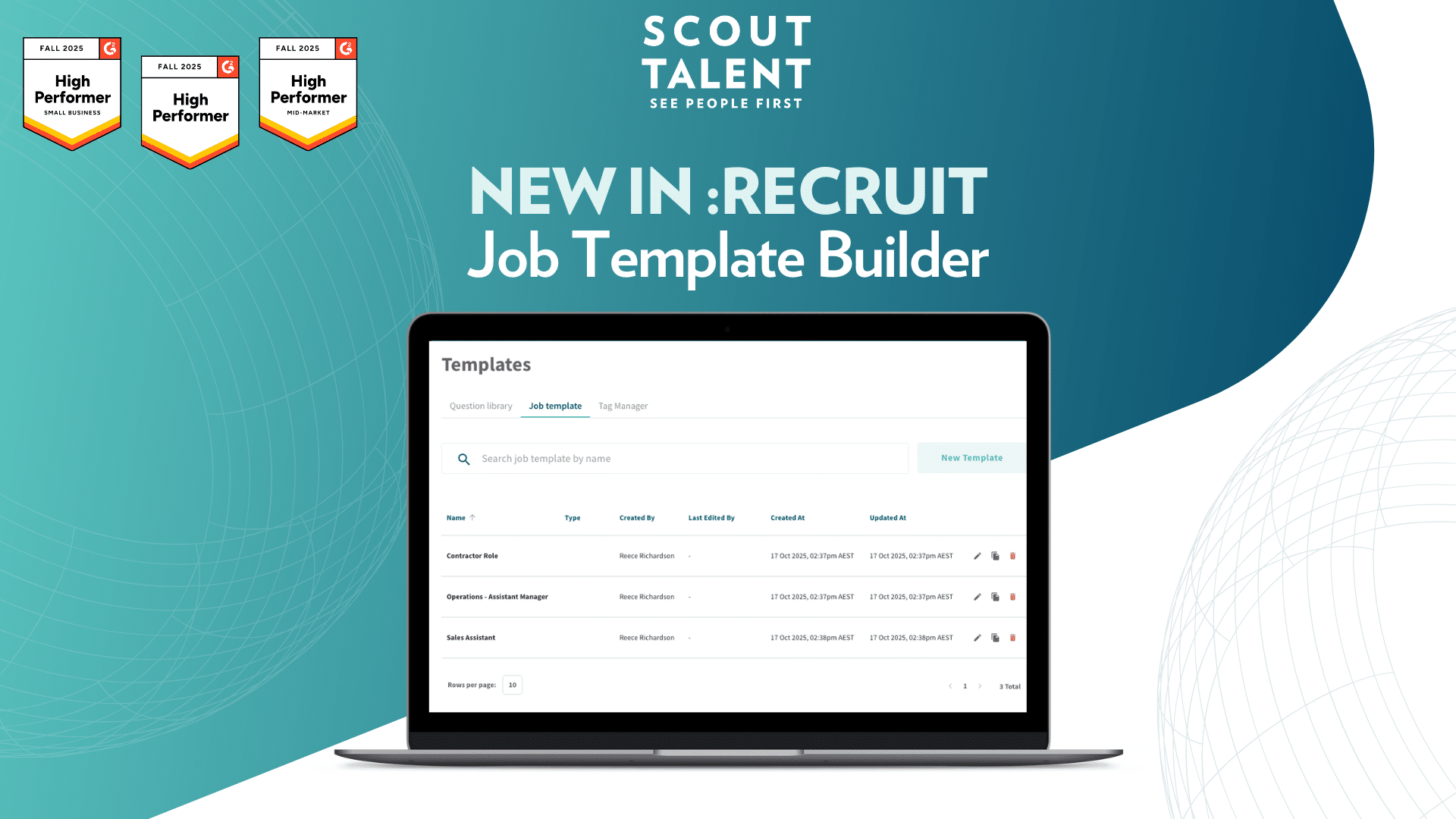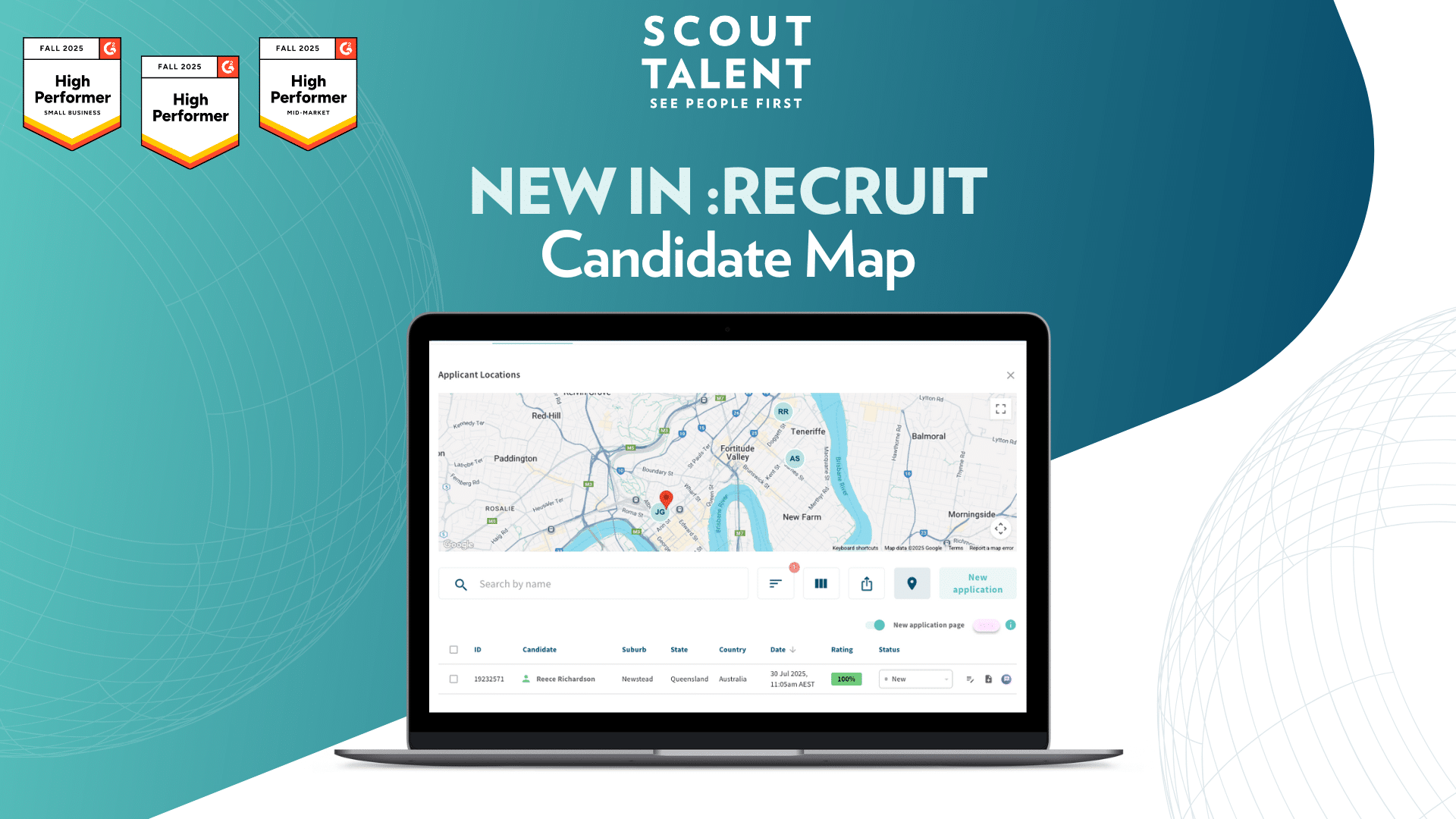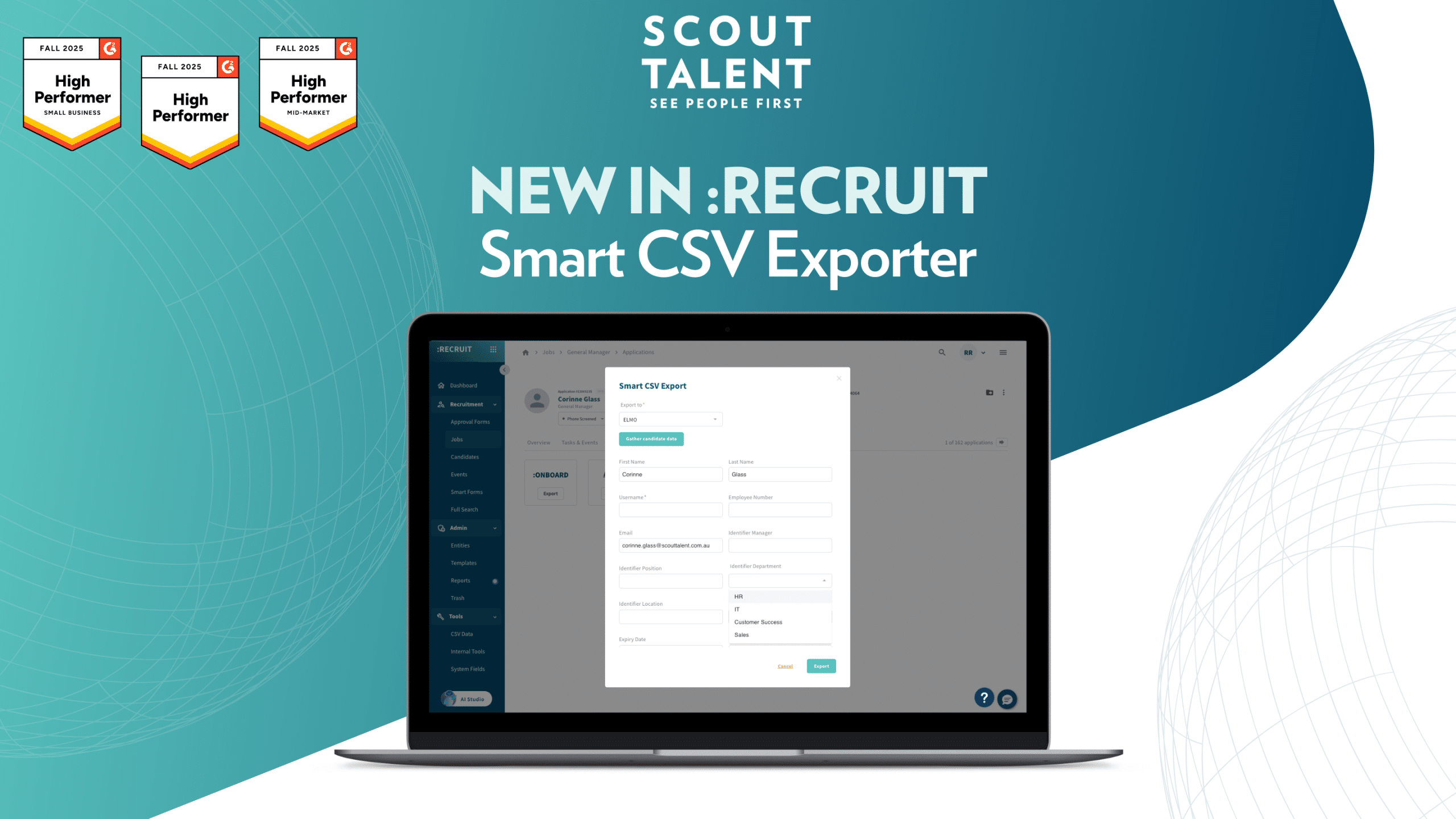Recently I completed a webinar with Scout Talent’s Senior Shortlister, Utah Cowx. In this webinar Utah and I talked at length about how best practice recruitment approaches can help you secure top talent for your organization and I wanted to touch upon some of our discussion points from that webinar today in this podcast episode.
Creating your job description
When we think of Shortlisting & Selection we often immediately think of interviews. However, the best and first tool in your arsenal when it comes to shortlisting and selection is your job description. A job description is so much more than an arbitrary list of demands and can be a really effective tool of selection.
If you’re not making your job description work for you then you are missing out. At its best, a job description should function to simultaneously carry out effective candidate attraction, encourage candidates that don’t meet your requirements to self-select out of the process and promote your employer branding. There are a couple of ways you can go about achieving all of this:
- To promote candidate attraction, include information within your job description about why your organization is one that is worthy of an applicant’s time. Sell yourself on your benefits and unique points. They don’t do you any good at securing candidates if your candidates don’t know about them until they’ve joined your organization.
- To encourage self-selection, you should orient your qualifications on your job description in order of priority and highlight the absolute minimum requirements for the role. If you make them clear and impossible to miss it will encourage candidates who don’t meet your requirements to self-filter out of the process.
- To promote effective employer branding you need to know who the people are that drive your organization forwards. Find out what they like most about working with you and speak to that in your job description. That doesn’t mean pretending that everything about your organization is wonderful; doing that will just encourage people to apply that aren’t a right fit for you. Big applicant volumes might look good at a glance but they ultimately just make it harder to find the top talent within the pool.
Using screening questions
If you’re using your job description effectively it will already speed up your rating or ranking. As will the effective use of screening questions.
The best screening questions to combine with a job description are those that can be answered quickly by a candidate and still yield useful information for the person that will be reviewing applications. With that in mind, only ever ask for information that you’re actually going to be able to review.
The biggest mistake here being when organizations ask a client to complete large text box answers covering their experience and education extensively and then request both a cover letter and a resume. We all know you’re not going to read all of that information so don’t ask for it. Equally, it’s a lot of effort for an applicant to put in before even speaking to someone from your organization.
Screening questions are a balancing act between useable information and candidate effort. Get that balance wrong and you’re either missing out on candidates or you’re not getting the information you need to rate and rank effectively. As a rule of thumb, I would say try to stick with 5 to 10 screening questions and of them only 1 to 2 long text questions.
Reviewing your candidates
Assuming you’ve mastered the balancing act of screening questions and you’ve carried out an effective candidate attraction strategy you’ll likely have some candidates in front of you for review.
The first thing that you’re going to want to do is review the screening questions that your candidates have answered and give them a rating from 1 to 5 or whatever the equivalent is within the ATS or job board tool that you’re using. If you don’t have a tool that allows for screening questions as you gather candidates then prepare your screening questions and phone screen the candidates within your pool; this is time-consuming but it can also be effective.
Use these initial screening questions both to understand the candidate’s level of experience and to help identify their motivation, knowledge of your company, and their enthusiasm. It’s also worth cross-referencing screening question answers with a resume. For instance, if someone indicates that they have 5 years of experience you’re going to want to see that reflected in their resume. Finally, assign an overall rating to your candidates.
Within our applicant tracking software, all individual ratings of questions are averaged in order to give the candidate an overall rating. Assuming you have some highly rated candidates after this process it’s time to lock them in for an interview as quickly as you can.
What if that doesn’t work?
That, of course, is the best-case scenario. There’s every chance that you’ll review the candidate pool and either end up with people who just aren’t good enough or alternatively you’ll realize you need something that you hadn’t initially considered as a requirement for the role. If you’ve gotten to this position it’s time to double back to the job description and see what you can adjust. Some changes worth considering are:
- The job title. Does it have a better known counterpart. Are there certain key search terms that would be good to include in your job description to either encourage or discourage applicants? A good example here is changing Project Manager to be Civil Construction Project Manager.
- Lean into the passive market. Headhunting through LinkedIn’s Recruiter license and Indeed Resume Search can give you access to great candidates that aren’t actively looking at job boards.
- Review the screening questions. Are you asking too much of applicants?
- Can you change where you advertise geographically by offering relocation assistance or remote working options?
- Is your job description just too long and boring people before they ever finish it? Could it be made more concise and to the point?
No single change will be a silver bullet for your campaign, but together they can make a bit impact and get you the candidates that you need.
Interviewing candidates
The final stretch towards a good shortlist is the initial interview. Interviews will vary based on role, organization, and industry but there are great interview questions to open your interview, to ask during your interview, and to close your interview with in order to ensure you find out everything you need to know about your potential new hire.
- At the beginning of the interview, it’s always great to ask why a candidate applied for a role. This will give you great insight into their motivation and likely their long term career aspirations.
- During the interview, it’s always good to confirm experience and education as well as probing career gaps. Career gaps happen all of the time but it’s better to ask about them rather than assume the worst of your candidates.
- To close out your interview, some great housekeeping questions are to confirm that the location of the role works for the client, find out that the compensation package on offer meets their requirements, and whenever this pandemic subsides it’s always good to confirm if your potential new hire has any significant vacation plans coming up.
With interviews are completed you should have a clearer picture of the candidates you want to move forward with. At this point, some great tools to get a better insight into your shortlist are behaviour tests, skills tests, and reference checks.
As I close off this podcast episode I do once more wish to remind you of our holiday giveaway. As the year comes to a close, we know that a lot of teams will be taking some well deserved time off to regroup and recharge and we don’t want your recruitment efforts to suffer as a result. To try and help with this, Scout is offering you 15% off of your next recruitment campaign if you get started before December 18th.
For more information please do book in some time to speak with us here.




